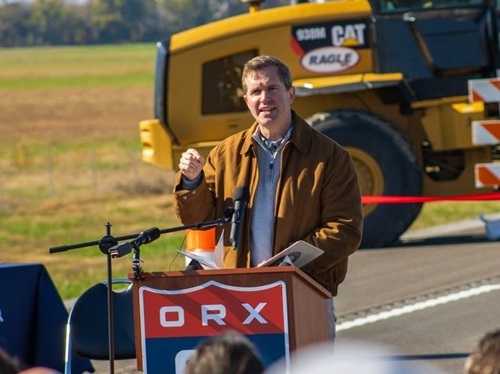Governor Tony Evers (D), the St. Croix Chippewa Indians of Wisconsin, and the Wisconsin Department of Transportation recently unveiled the latest dual-language signs for placement on state highways.
[Above photo by Wisconsin DOT]
The new signs highlight the tribal boundaries and communities of the St. Croix Chippewa Indians in both their native Ojibwe language and in English.
The sign unveiling took place at the St. Croix Tribal Center in Webster and expands on a statewide dual-language sign initiative launched by Wisconsin DOT in 2021 to collaborate with Native Nations in Wisconsin to install road signs on Tribal lands in both English and Indigenous languages.
The St. Croix Tribe is the fifth out of 12 Native America tribes in Wisconsin to install dual-language signs, along with the Menominee Indian Tribe of Wisconsin, Oneida Nation, Red Cliff Band of Lake Superior Chippewa, and the Sokaogon Chippewa Community, Mole Lake Band of Lake Superior Chippewa.
“I am grateful for the work between the [Wisconsin] Department of Transportation and the St. Croix tribe to bring these dual-language signs to life,” noted Gov. Evers in a statement. “Together, we are fostering a stronger sense of connection, informing visitors of our shared history, and celebrating Tribal heritage.”
“Reversing the decline of our Ojibwe language has become one of Tribal Leadership’s most desired goals [and we have] been working diligently to revitalize our language through educational efforts, cultural ceremonies, historic preservation, and work assignments,” explained William Reynolds, chairman of the St. Croix Tribe.
“In the prioritization of dual language signage, we demonstrate our desire to both speak and understand Ojibwe and the pride we have in our language,” he said. “It is our hope the dual-language signs will also encourage non-tribal people living near or passing through our communities to have a better and kinder understanding of who we are as traditional Anishinaabe people.”
“We are thrilled to join the St. Croix Tribe and offer these dual-language signs on their tribal lands [that] identify multiple tribal communities in Barron, Burnett, and Polk counties,” noted Wisconsin DOT Secretary Craig Thompson.
“It is great to see this program expand across the state as road signs always provide a sense of place and inform motorists where they are on their journey,” he added.
 States
States
Wisconsin DOT Unveils Newly ‘Modernized’ Rest Area
November 7, 2025 States
States

